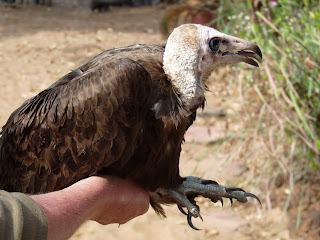Yesterday we received an email from Jack Rothman informing us of the first British ringed Barnacle Goose to be recorded in America! Barnacle Geese in North America are rare anyway but one with a known origin is brilliant. This bird was seen at Orchard Beach, Bronx which is 5204km from where it was ringed.

Barnacle Goose 1291347 was ringed by Steve Percival on 13/11/2002 and was seen frequently on Islay until March 2005 when it disappeared. One of its parents and a sibling where ringed at the same time and are still seen around Islay.
View Barnacle Goose in a larger map
Thanks to Keith Michael for finding the bird and Jack Rothman for letting us know and also for the photo.
















